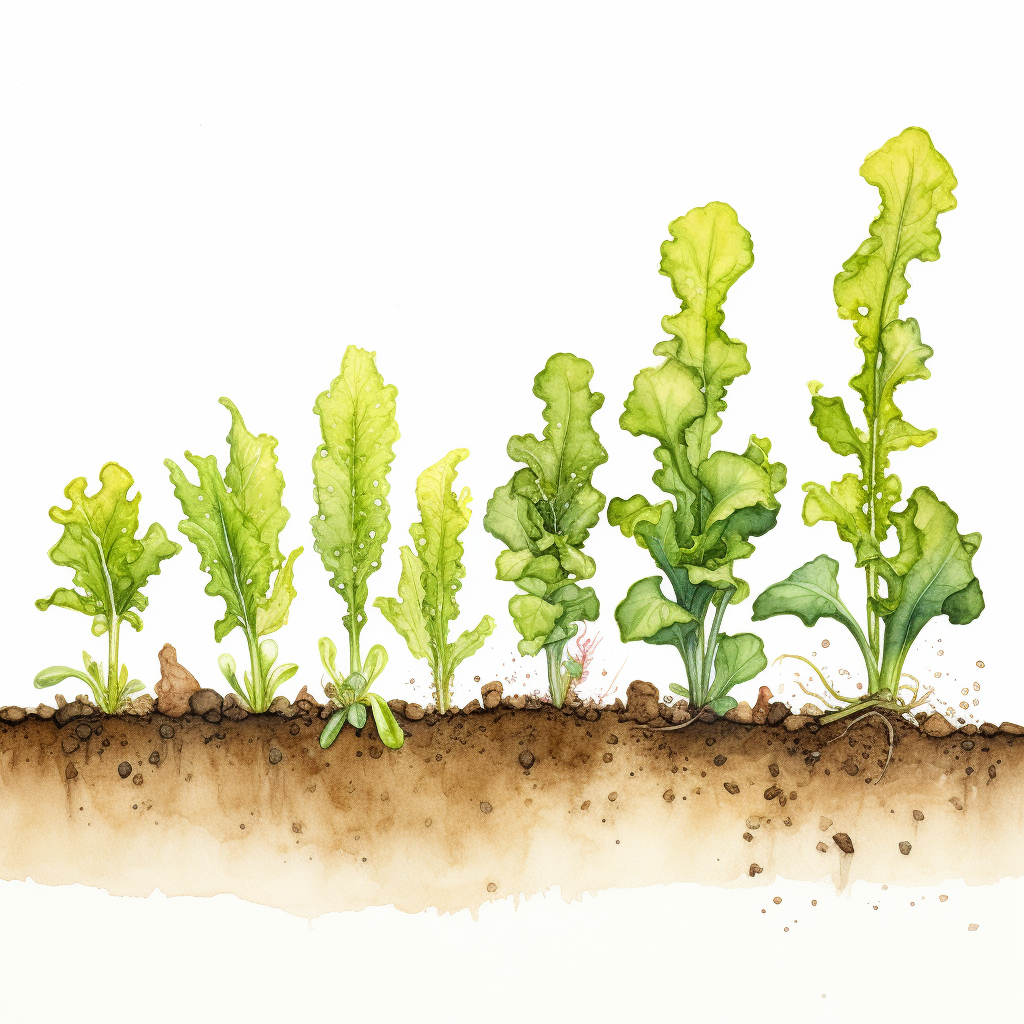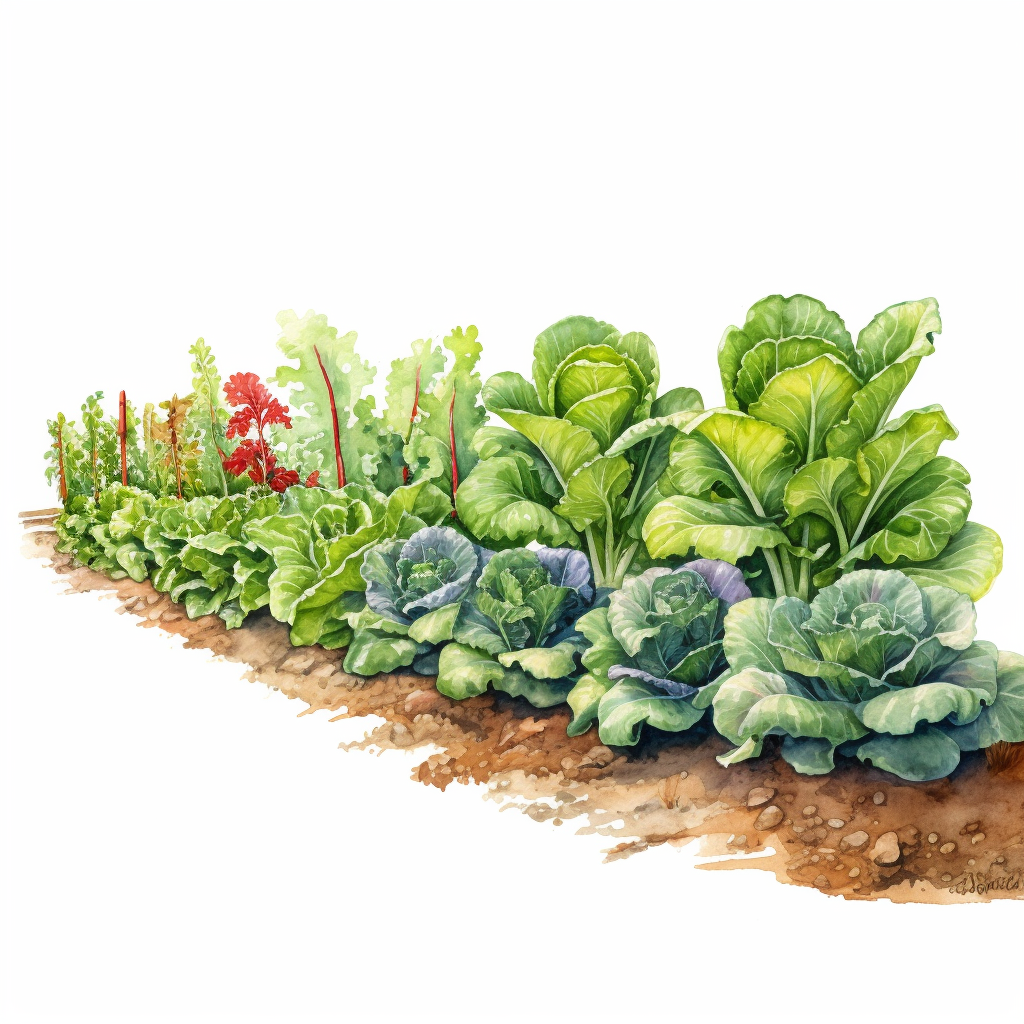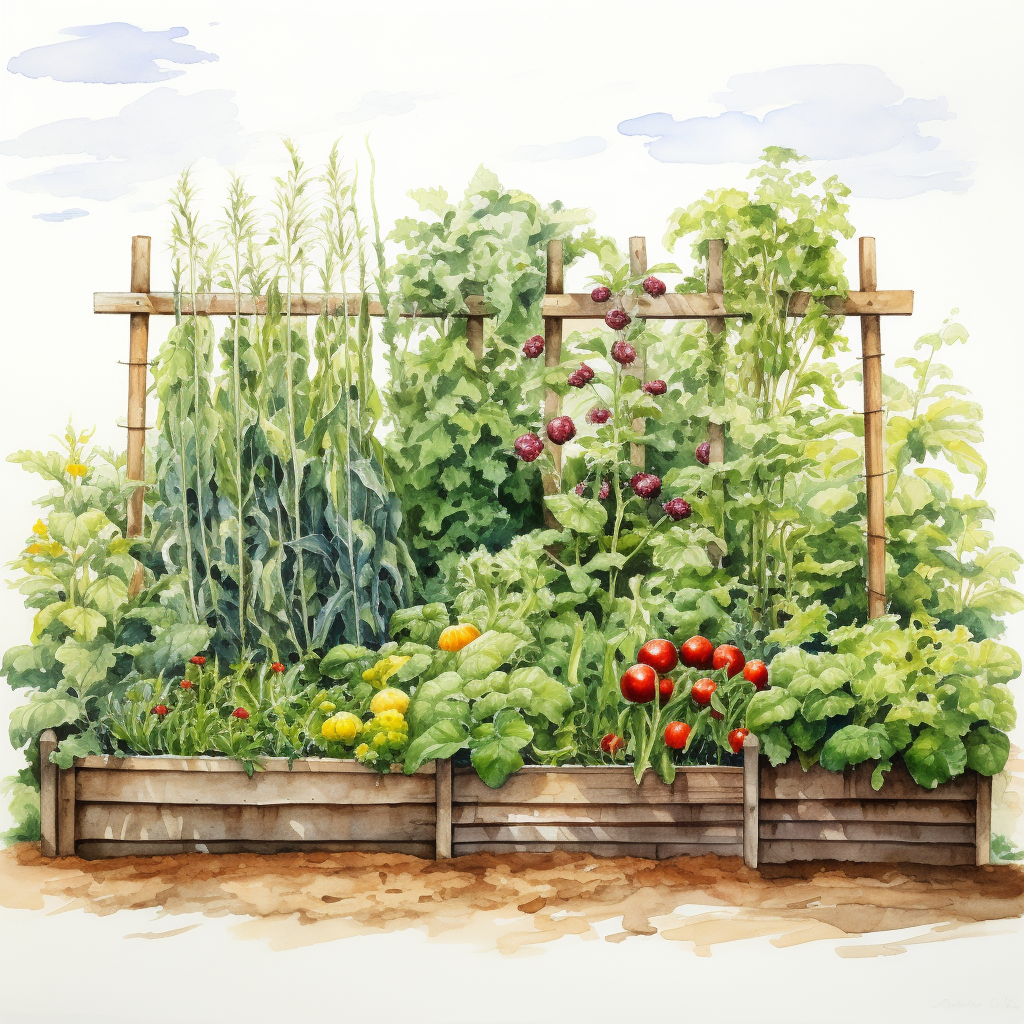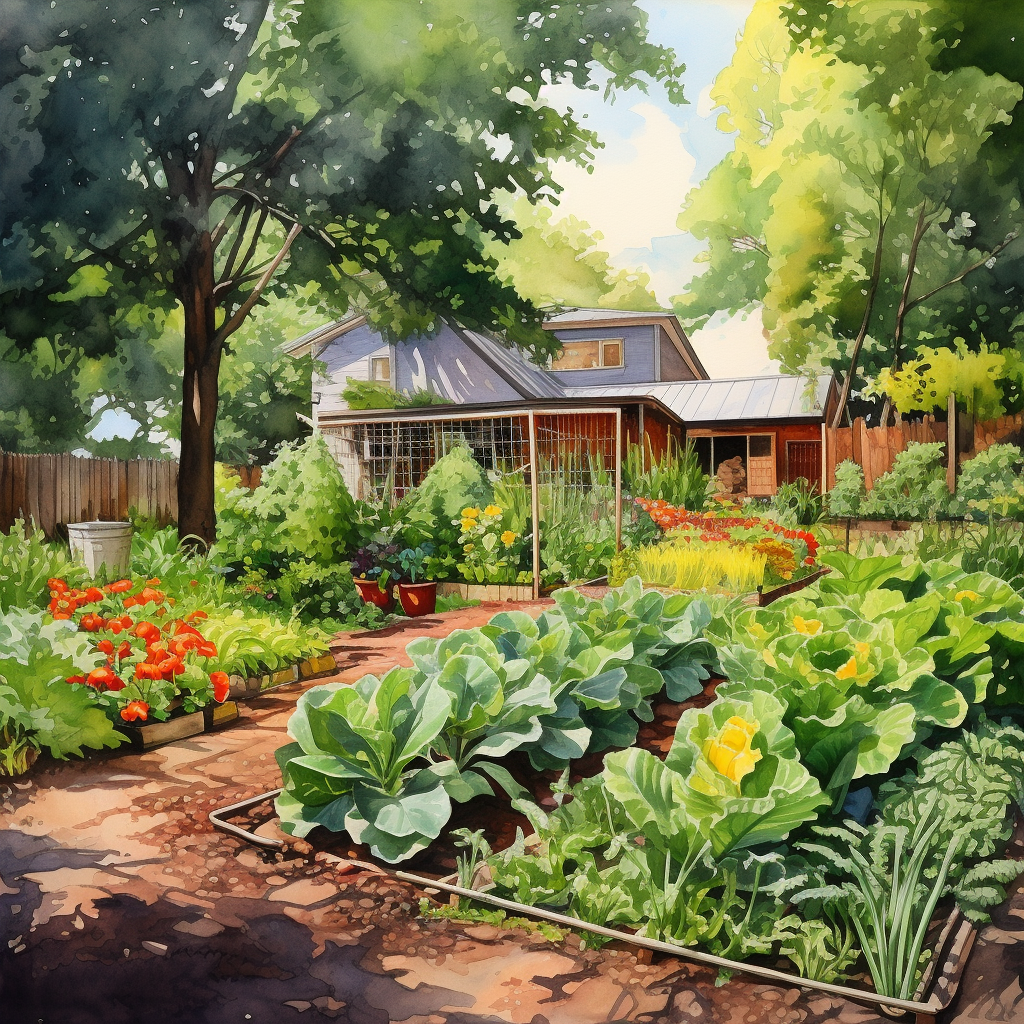As a home gardener, you’ve likely experienced the disappointment of a bountiful harvest season giving way to a barren garden. But what if you could have a continual harvest and vegetable garden, with a steady supply of fresh vegetables and herbs throughout the growing season? That’s where succession planting comes in. Today, we’ll explore what succession planting is, how to plan for it, and some strategies to maximize your garden’s yield.
Understanding Succession Planting
At its simplest, succession planting is a way of cultivating crops so that you can harvest them throughout the growing season. Rather than planting all your seeds at once and harvesting them in one go, you stagger your planting to ensure that you have a continual supply of fresh produce. This is particularly useful for crops that have a shorter harvest window, like lettuce and radishes.

When done correctly, succession planting works best for plants with shorter harvest windows such as lettuce and radishes, allowing you to get several harvests from one area over the course of the growing season. To plan for successional planting, start by deciding which crops will produce well in your area and when they should ideally be planted.
The importance of succession planting for home gardeners lies in the fact that it enables them to extend their harvest season. With careful planning, you can manage your garden to ensure a steady supply of fresh vegetables throughout the growing season instead of having one large harvest and then nothing until the first frost date following year.
Additionally, succession planting prevents soil nutrient depletion, as different crops have different nutrient needs. By switching off which crops are grown in each area, you help replenish the soil with nutrients so that plants can thrive throughout the season.
Planning for Succession Planting
Timing is a critical aspect of succession planting. You’ll need to understand the growth cycles of the crops you want to grow. For example, lettuce can be planted multiple times throughout the growing season, while crops like tomatoes or peppers have longer growing seasons and may only be planted once. Climate considerations are also essential when planning your succession planting strategy since different crops grow better in varying weather conditions. Be sure to adapt your planting to local weather conditions.
Soil preparation and management is another critical aspect of your succession planting strategy. Make sure you maintain soil health by rotating crops and adding organic matter. Additionally, consider cover crops to add nutrients back to the soil over time. With careful soil preparation and management, you can ensure success as you move through the season and diversify your crop rotation.

Strategies for Succession Planting
There are several strategies you can use to maximize your garden’s yield through succession planting. Planting the same crop at intervals is one option. For example, you can do succession plantings of lettuce seeds every two weeks for a continual harvest. Sequential planting is another option where you grow different crops in succession in the same space. You can also use interplanting to plant fast-growing crops between slower-growing ones to maximize space.
Some strategies include:
Same crop, staggered planting
Planting the same crop at intervals means you’ll always have new crop of fresh produce ready to harvest. This works well for crops like lettuce, carrots, beets, and radishes.
Succession with different vegetables
Another option is to plant different crops in succession using the same space. For example, start with cool-season crops like spinach and kale, then move on to warm-season ones like tomatoes or peppers.
Different crops, sequential planting
Growing different crops in succession in the same space can also provide a continual harvest. For example, plant fast-growing crops like spinach and lettuce first, followed by slower-growing ones like cabbage or cauliflower.
Intercropping
Intercropping is another successful succession gardening or planting strategy where you grow two or more crops in the same space simultaneously. Typically this involves planting fast-growing crops between slower growing ones. This works well for companion plants that benefit from growing together, such as tomatoes and basil.

Ideal Crops for Succession Planting
Certain crops work particularly well for succession planting. For example, lettuce can be grown throughout the growing season, while radishes have a quick turnaround time. Carrots can also be grown throughout the season if planted successively. Be sure to research the best crops for your climate and take tips on how to seed, maintaining and harvesting each one.
Warm season crops
Some warm season crops that do well with succession planting include:
- Bush Beans: Unlike pole beans, bush beans don’t require trellising, making them easier to plant in succession.
- Tomatoes: Staggered planting can extend the harvest period.
- Cucumbers: Fast-growing and suitable for multiple plantings.
- Squash (Summer and Winter types): Planting at intervals ensures a continuous supply.
- Corn: Successive plantings can yield multiple harvests in a season.
- Peppers: Both sweet and hot varieties can be succession planted.
- Eggplant: Staggered planting can provide a prolonged harvest.
- Melons (like Watermelon and Cantaloupe): Successive planting can extend the melon season.
- Okra: Planting every few weeks can yield a longer harvesting window.
- Sweet Potatoes: While they have a longer growing season, staggered planting can still be beneficial.
- Zucchini: Fast-growing and can be planted multiple times during warm weather.
Keep an eye out for your last frost date and plant warm season crops soon after so you’ll have a bountiful summer harvest.
Cool weather crops
Some cool season crops that do well with succession planting include:
- Lettuce and other Leafy Greens: With a quick growth cycle, lettuce is ideal for succession planting. You can harvest it as early as 30 days after planting for some varieties.
- Radishes: These are fast-growing, maturing in just three to four weeks, making them perfect for frequent replanting.
- Spinach: Another quick grower, spinach can be planted in early spring and again in late summer for a fall harvest.
- Carrots: They have a relatively short growing season. Planting carrot seeds every 2-3 weeks can provide a continuous harvest.
- Beets: Beets can be planted every few weeks for a steady supply. They are relatively hardy and can grow in cooler temperatures as well.
- Green Onions/Scallions: These can be succession planted for a continuous crop. They grow quickly and don’t need much space.
- Peas: Especially in cooler climates, planting peas every few weeks can extend the harvest period.
- Kale: Planting kale at intervals ensures a continuous supply of fresh leaves.
- Swiss Chard: This leafy green can be planted throughout the season for a consistent harvest.
- Turnips: Fast-growing and versatile, turnips can be planted multiple times in a season.
- Bok Choy: This Asian green grows quickly and is ideal for succession planting in both spring and fall.
Planting dates for cool season crops can vary, so make sure you check your seed packet or your Rooted Reminders calendar for exact timings for when the cold weather rolls in.
Overcoming Challenges in Succession Planting
Succession planting presents several challenges, like limited space, managing different crop needs (water, nutrients), and pest management in a tight planting schedule. Consider using companion planting to maximize space and deter pests, and use soil amendments and fertilization for healthy, repeated crop growth.
Minimize pests with the following techniques:
- crop rotation
- companion planting
- diverse plantings
- sticky tracks and physical barriers
- timely harvesting
- removing debris
- avoiding overwatering or poor drainage
Advanced Tips and Techniques
For those with more significant challenges, greenhouse or cold frames can extend the growing season. Additionally, using compost tea and foliar sprays can help give your plants the necessary nutrients and ward off pests.
Tips based on how much space you have
Creating a solid garden plan can help you maximize your garden space.
For a small garden area
- Frequent Replanting: In small spaces like a raised bed, succession planting often means replanting immediately after a crop is harvested. For example, once radishes are harvested, the space can be used for another crop like lettuce.
- Interplanting: Planting faster-growing crops (like spinach) in the same space as slower-growing crops (like broccoli) can maximize yield. The fast growers will be harvested before the slow growers need the growing space.
- Vertical Gardening: Utilizing vertical space with trellises for crops like beans or cucumbers can allow for succession planting in a small footprint.

For a larger garden space
- Staggered Planting: In larger gardens, you can plant the same crop at different times (every 2-3 weeks, for instance) in different parts of the garden to extend the harvest period.
- Rotating Crops: Planting different crops in succession in the same area can help manage soil health and pest control, as different plants have varying nutrient needs and pest attractions.
Succession Planting in Different Garden Types
Succession planting can be adapted for container gardens, and raised beds like regular gardens. In all cases, research is required for effective succession plant planting practices.

Succession planting may seem like a complicated process, but the rewards of a continual harvest are worth the effort. By understanding plant growth cycles, local weather conditions, and soil health management, you can plan a succession planting strategy that works for you. Consider using different planting strategies, selecting crops that fit your climate, and overcoming the challenges of a tight planting schedule. With the right planning and tools, you can enjoy fresh produce all season long.
